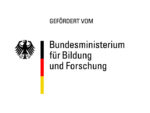NPBioPhos
Textiles are used in a wide variety of applications, including carpets, clothing, upholstery or furnishing fabrics. They are made of synthetic and natural polymers, have a large surface area and an organic origin. Therefore, most of them are flammable and thereby potentially hazardous unless suitable protective coatings are applied. In order to avoid ignition and spread of the fire, many textile products are finished with flame retardants (FR). Due to their high efficiency, brominated FRs have been used for textile coatings for a long time. However, their toxicity and environmental impact together with a potential risk of exposure to humans and the environment, led to legal restriction and prohibition. For that reason, an intense research activity focuses on halogen-free alternatives, and various phosphorus and nitrogen-containing compounds. Furthermore, the development of bio-based flame-retardant materials made of renewable instead of fossil resources became one of the latest objectives in this field. The R&D project NPBioPhos has investigated the use phytic acid (Figure 1) as flame retardant for textiles.
Phytic acid represents a natural source of phosphorus and could be extracted from various plants such as wheat or oilseeds. In a layer-by-layer approach with polyvinylamine as the oppositely charged electrolyte we succeeded in a flame-retardant finishing of textiles (no afterflame and afterglow time, no ignition). Cotton finished with 15 bilayers passed the the surface and bottom edge ignition flame test according to ISO 15025:2016 (Figure 2). Microscale combustion calorimetry (MCC) and thermogravimetric analysis (TGA) measurements showed a shift of the decomposition temperatures in combination with high char yields. From Fourier transform infrared spectroscopy (FTIR) and scanning electron microscopy analyses, cellulosic dehydration by phytic acid as an acid catalyst and the formation of a protective char layer, as a physical barrier on the surface of the fabric, were proven. Next step will be the simplification of the overall process by applying the phytic acid/polyvinylamine mixture in one single coating step.
Further information for download:





